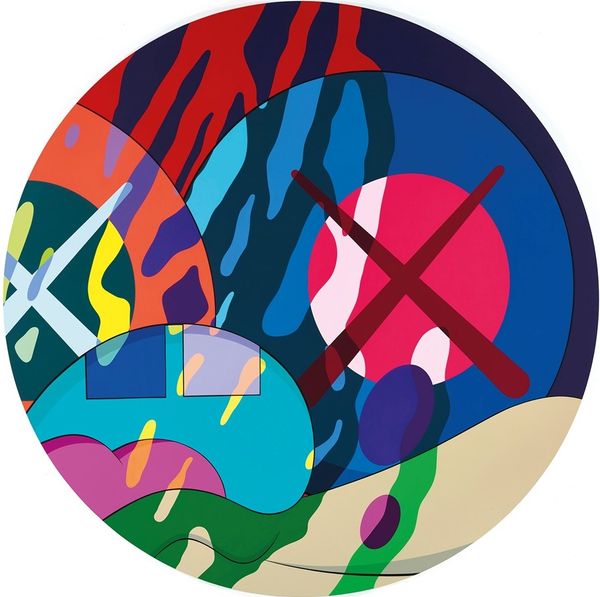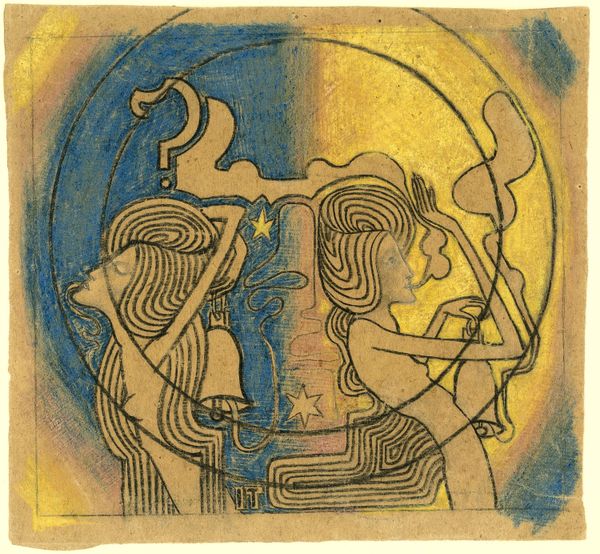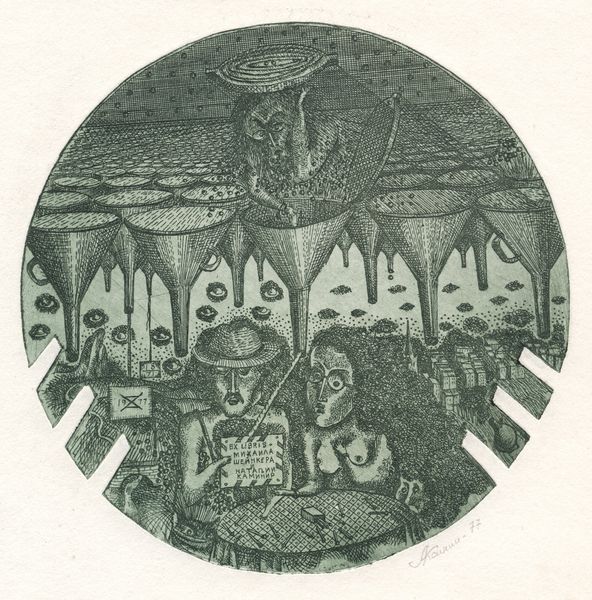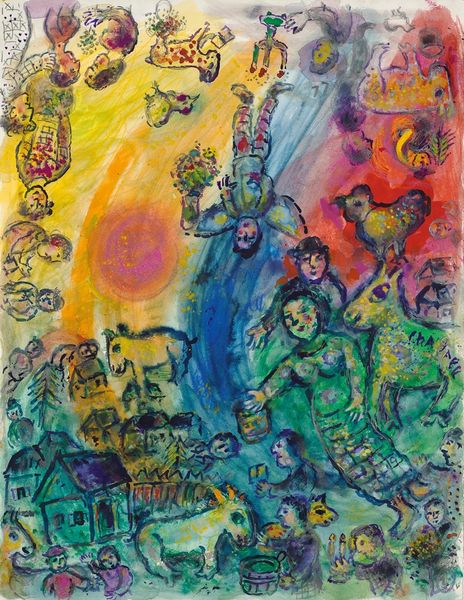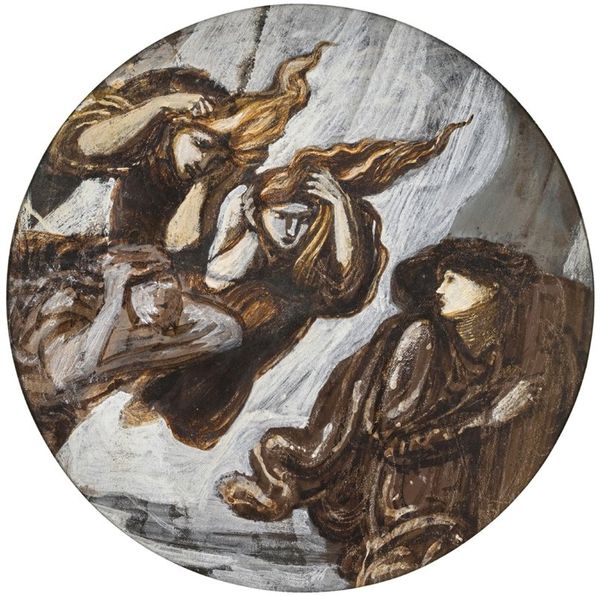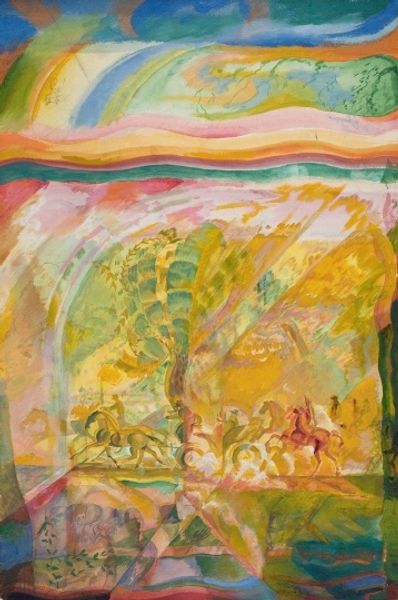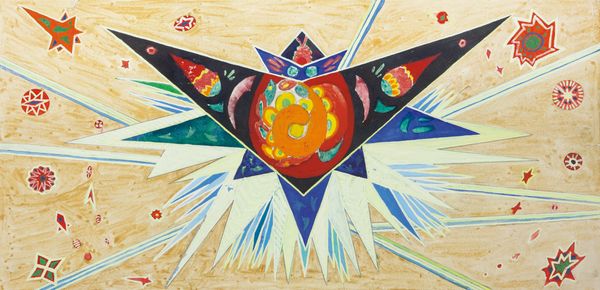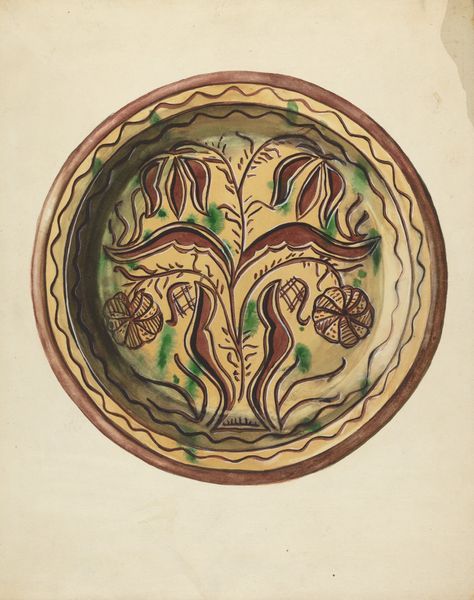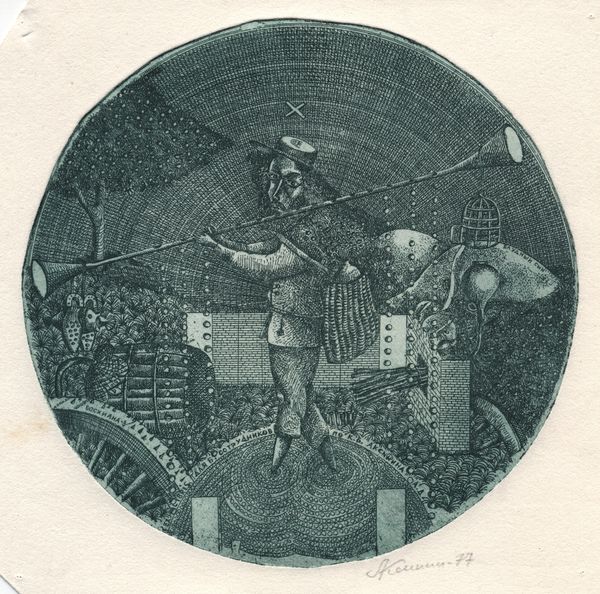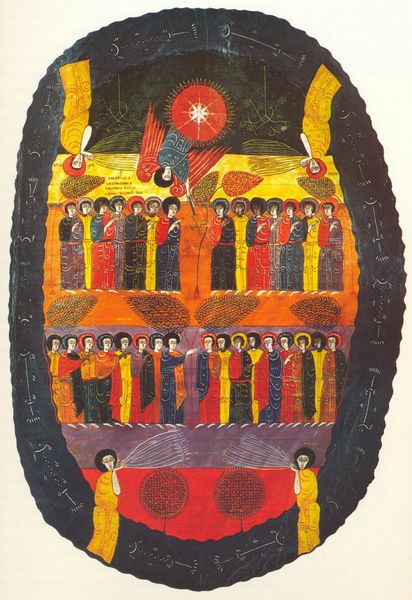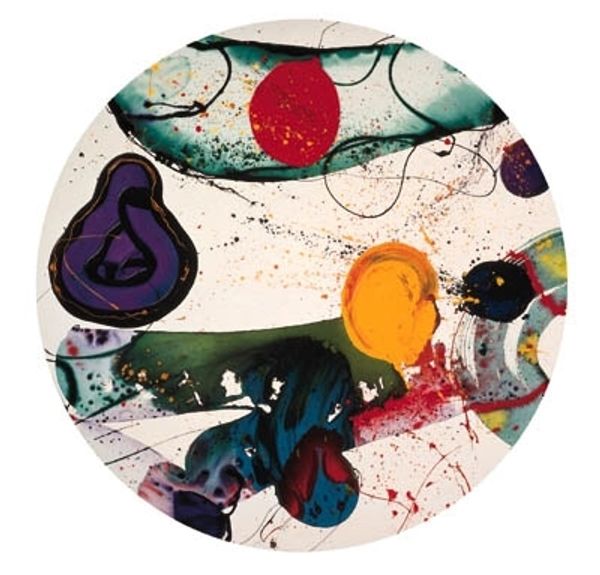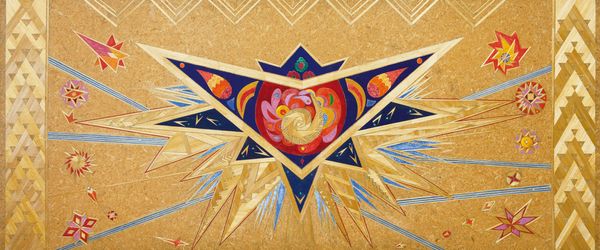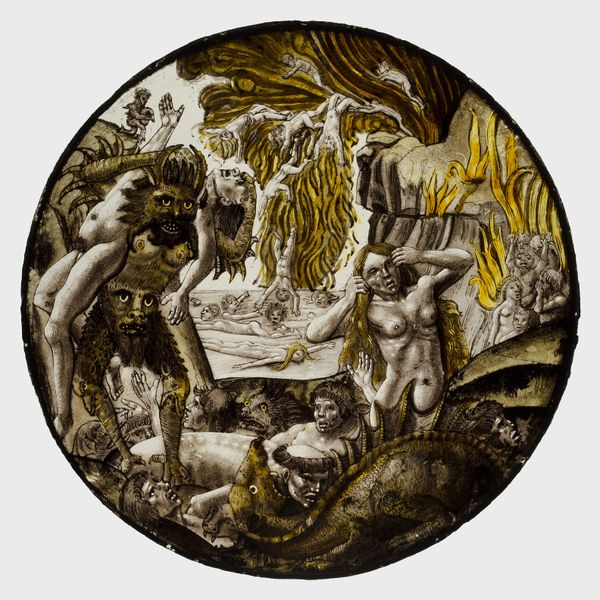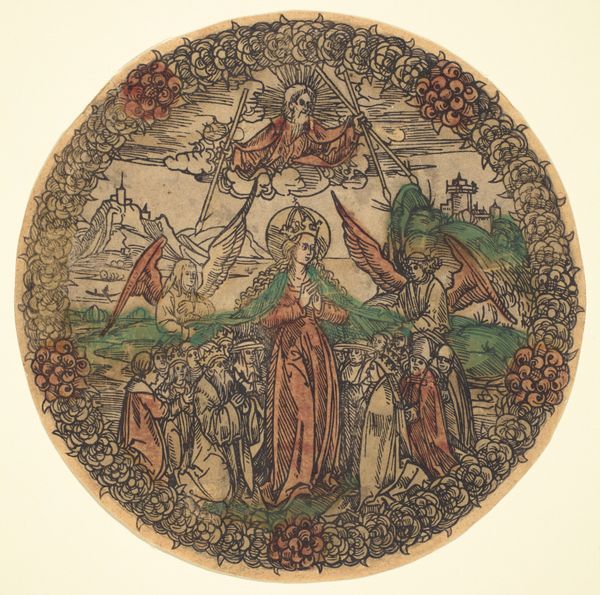
painting, gouache, watercolor
#
painting
#
gouache
#
landscape
#
fantasy-art
#
figuration
#
watercolor
#
surrealism
Copyright: Modern Artists: Artvee
Editor: This is Dalí’s "L’Homme sur la lune" from 1965, a gouache and watercolor painting. I’m struck by the juxtaposition of the astronauts and the lunar landscape, how both seem so vulnerable, floating in this red void. How do you interpret this work? Curator: Considering Dalí's fascination with science and the space race during the Cold War, it's fascinating to look at this piece through the lens of geopolitical anxieties. The moon, typically romanticized, becomes a site of potential conflict, rendered almost as a battleground of phallic symbols. Note the astronauts, seemingly dwarfed, passively watching a silent space war, if you will. What do you make of that passive positioning? Editor: It’s like they’re detached observers, maybe commenting on humanity’s hubris. But I wonder if there's a critique of colonialism as well, claiming new territories…or celestial bodies. Curator: Exactly! Consider the imperialistic drive inherent in exploration – space as the “final frontier” to conquer. And also think of Dalí's own position as a Spanish artist within a Western-dominated art world. He was perpetually negotiating his own identity, wasn’t he? Is he pointing to a broader history of European colonialism now being played out in space? Editor: That’s a powerful idea, framing the moon as another territory ripe for exploitation. It definitely shifts my understanding. Curator: And note how the 'moon' itself is built of banana shapes; food, consumption, taking, exploiting... I wonder if it all could reflect Dalí’s anxieties of cultural appropriation. Editor: I didn't see that, the repetition of bananas making up the moon... That's an angle I will need to sit with! Thanks so much. Curator: My pleasure! It's precisely in these contextual considerations that the art truly speaks, beyond its surface.
Comments
No comments
Be the first to comment and join the conversation on the ultimate creative platform.
